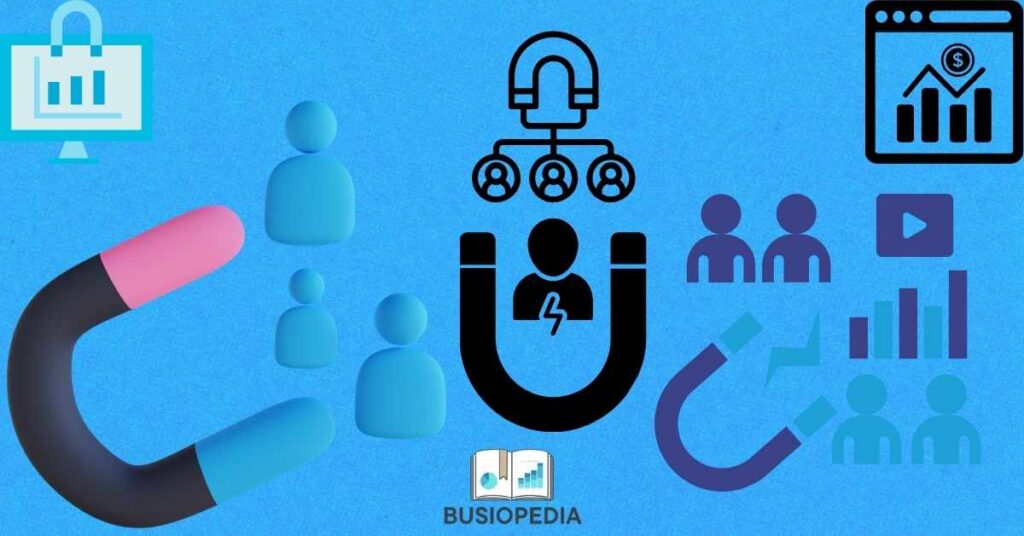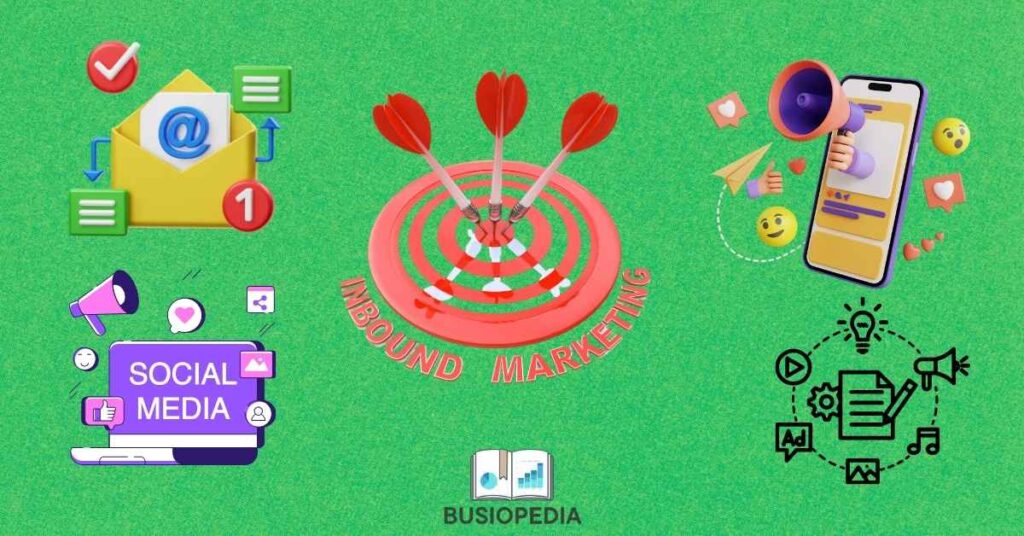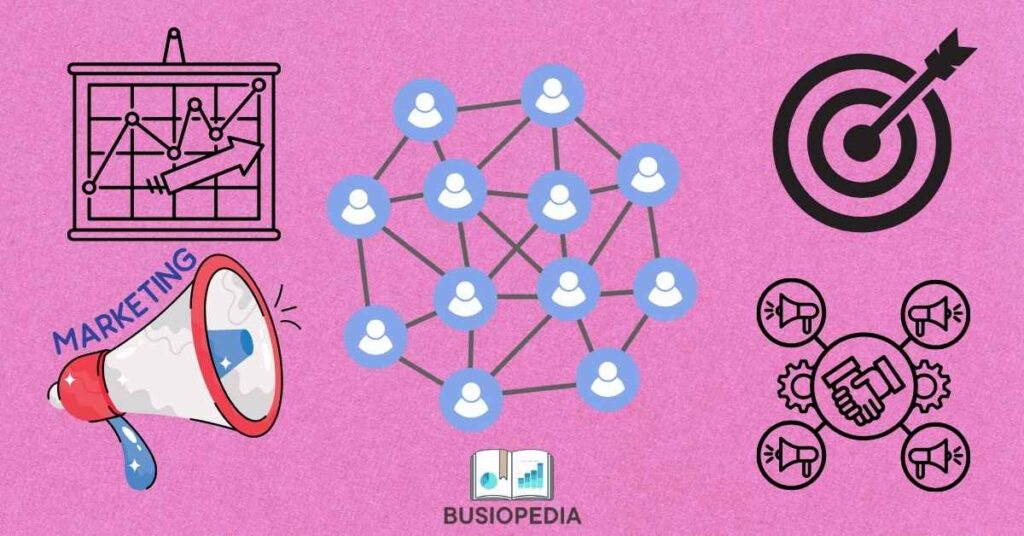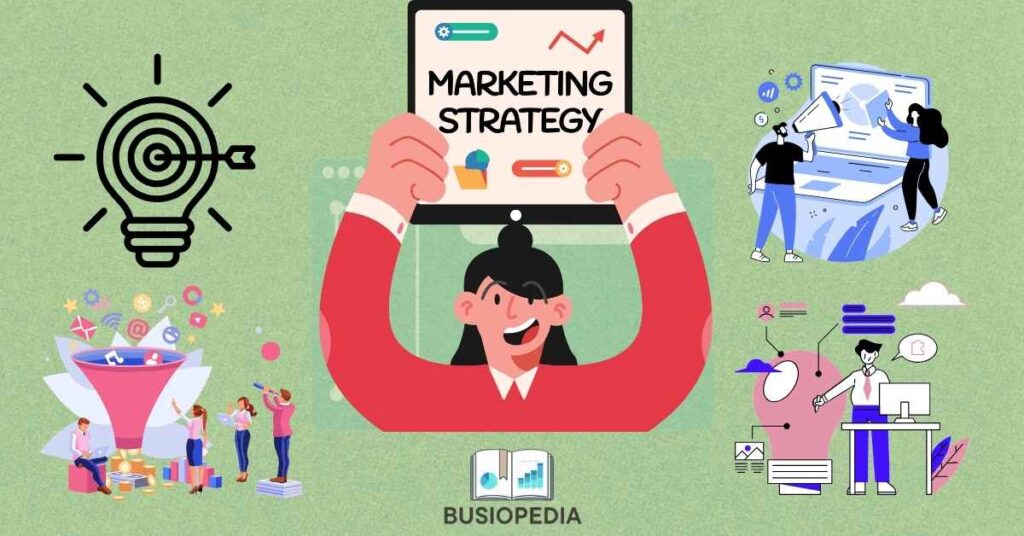What is Inbound Marketing: Why Smart American Businesses Are Making the Switch
Imagine this: You’re scrolling through your phone during lunch break, and an ad pops up trying to sell you car insurance. You brush it off angrily. Later that evening, you’re researching “best ways to save on car insurance” and stumble upon a helpful blog post that breaks down different coverage options. You go through the whole article, bookmark it, and even subscribe to their newsletter.

That’s the difference between outbound and inbound marketing in action – and it’s exactly why American businesses are rapidly shifting their strategies.
What Exactly is Inbound Marketing?
Let’s cut through the marketing jargon for a second. Inbound marketing is like being the helpful neighbor instead of the pushy door-to-door salesperson. Instead of chasing potential customers with ads they don’t want to see, you create valuable content that draws them to you when they’re actually looking for solutions.
Consider it in this way: Outbound marketing is similar to casting a fishing net and hoping that you get a fish. Inbound marketing is like setting up the perfect fishing spot with the right bait, so fish come to you.
The numbers don’t lie either. Companies practicing inbound marketing see 3x more leads than those relying solely on outbound methods, and they do it at 62% lower cost per lead. For American businesses watching their marketing budgets like hawks, that’s a game-changer.
Inbound Marketing: Psychology of Why Americans Love
Here’s something interesting about American consumers: we hate being sold to, but we love buying. We’re independent by nature and want to make our own decisions. We do our research on everything we buy, whether it is a restaurant or a refrigerator.
Inbound marketing works so well in America because it respects this behavior. It says, “Here’s some helpful information. Take your time, do your research, and when you’re ready, we’re here.” The latter is close to our cultural principles of self-sufficiency and making an informed choice.
Plus, let’s be honest – we’re bombarded with over 5,000 marketing messages daily. The only way to cut through that noise isn’t by being louder; it’s by being genuinely helpful.
Inbound Marketing: The Four-Stage Framework That Works

Stage 1: Attract – Becoming the Go-To resource
This is where you become the individual that everybody in your industry goes to to get answers. You’re not selling yet; you’re just being incredibly helpful.
This in practice:
- A smaller accounting company in Denver develops blog entries on changes in taxes that affect businesses in Colorado
- A Miami fitness trainer produces YouTube videos on exercising in the humid weather
- One restaurant in Austin posts behind-the-scenes information on the local sourcing of ingredients
The trick is figuring out what keeps your prospective customers up at 2 AM, googling to find answers, and then writing content that will help them sleep better.
Stage 2: Convert – The Gentle Hand-Raise
After people discover your useful information, you have to have a means of keeping in contact with them. This isn’t about aggressive lead capture – it’s about offering something so valuable they’ll gladly trade their email for it.
Examples:
- A real estate agent offering a “First-Time Homebuyer’s Guide” specific to their city
- A free web audit checklist offered by a marketing agency
- A veterinarian sharing a “New Puppy Care Calendar” for the first 30 days
The magic happens when someone thinks, “This free stuff is amazing – imagine how good their paid services must be!”
Stage 3: Close – Nurturing, But Not Creepy
Here’s where many American businesses mess up. They get someone’s email and immediately start pitching. Rather, this phase must be experienced as a beneficial chat with an experienced friend.
Your email sequences should educate, inspire, and occasionally (but not constantly) mention how your product or service fits into the solution. Consider an 80 percent value, 20 percent promotion.
A successful formula:
- Email 1: “Thanks for downloading! Here’s your guide plus a bonus tip…”
- Email 3: “Common mistake most people make with this…”
- Email 5: “By the way, here’s how we’ve helped others with similar challenges…”
Stage 4: Delight – Making Raving Fans
This is the hidden sauce that most American businesses overlook. They think the relationship ends after the sale, but that’s exactly when the real opportunity begins.
Once you make a habit of over-delivering to your current customers, they will be your best marketing machine. Americans believe what their friends and family say 92 percent more than advertising. A single happy customer who shares the news about you with their network is priceless compared to a billboard.
Inbound Marketing: True Stories of American Companies
Let’s talk about HubSpot for a moment. This Boston-based company literally invented the term “inbound marketing” back in 2006. Their first step was to produce extremely useful information on the topics of marketing and sales. Today, they’re worth over $30 billion and have never relied on traditional advertising.
Or Salesforce. Rather than cold-calling IT directors, they developed Trailhead, a free learning site that provides people with knowledge on how to use their software. It’s now used by millions worldwide, and many of those learners become advocates who influence purchase decisions at their companies.
Inbound is killing it even in smaller businesses. In Phoenix, a family HVAC business increased its staff by 25 people in two years by making useful videos to explain everyday air conditioning issues Arizona homeowners experience. They became the local people you can trust, and customers began to call them rather than their competitors.
Inbound Marketing: Types of Content That the American Audiences Consume
Let’s be practical about this. Americans are short-attention-span people. Your material must be worthwhile yet assimilable.
What’s Working Right Now
Blog Posts: King, but they should be scannable. Employ subheads, bullet lists, and lots of white space. Americans love “how-to” and “ultimate guide” style posts.
Videos: YouTube and LinkedIn in particular. In the US, people spend more than 1 billion hours on YouTube every day. Short, helpful videos (3-7 minutes) perform best for business content.
Podcasts: Ideal when you are commuting or working out. If you can solve problems while someone’s stuck in traffic on the 405, you’ve won.
Social Media: LinkedIn (B2B), Instagram, and Tiktok (B2C). However, do not forget that social media is a place to initiate a conversation, not to make a sale fully.
Email Newsletters: When done right, they’re incredibly powerful. It is all about consistency and value. Americans will unsubscribe faster than you can say “special offer” if you’re not adding value.
Inbound Marketing: Tools and Technology That Won’t Break the Bank

You don’t need to spend like a Fortune 500 company to do inbound marketing effectively. These are tools used and loved by American businesses:
For Getting Started (Free-$50/month)
- WordPress on your blog
- Mailchimp email marketing
- Canva to make graphics
- Google Analytics to track
- Social media scheduling Hootsuite
For Growing Businesses ($50-500/month)
- HubSpot (the gold standard, but pricey)
- ConvertKit to send out email marketing
- SEMrush SEO and content ideas
- Appointment scheduling through Calendly
- Webinar Zoom and client meetings
The Enterprise Level ($500+/month)
- Complete HubSpot or Salesforce implementation
- High-order analytics systems
- Automation software in marketing
- Custom CRM systems
Keep in mind: begin with small and increase. Numerous thriving American companies have begun their inbound process with no more than a WordPress blog and regular email newsletters.
Inbound Marketing: Started Guide Step By Step
Month 1-2: Establishment of the foundation
- Install your blog and rudimentary analytics
- Create buyer personas (detailed profiles of your ideal customers)
- The first 10 blog topics should be planned on the basis of customer questions
- Begin your email list with an easy lead magnet
Month 3-4: Content creation
- Post 2-3 blogs on a weekly basis
- Begin a weekly newsletter
- Make your first downloadable resource
- Start using social media regularly
Month 5-6: Maximization and Expansion
- Examine best-performing content
- Produce additional lead magnets
- Guest post on other related blogs
- You can think of starting a podcast or a YouTube channel
Timeline Reality Check: The majority of American businesses begin to experience significant results at month 6-9. The ones who quit after 2-3 months fail to enjoy the compounding effect that makes inbound so powerful.
Inbound Marketing: Usual Errors That Murder Results
Error 1: Attempting to Appeal to All People
Your copy must address your ideal customer. If you’re trying to appeal to everyone, you’ll connect with no one. It’s better to have 100 people who love your content than 1,000 who think it’s “okay.”
Error 2: Publishing Irregularly
Americans demand dependability. If you’ll send a weekly newsletter, send it weekly. If you update your blog on Tuesdays, then update it on every Tuesday. No one will believe inconsistency as fast as poor content.
Mistake 3: It’s All About You
Your material must be 90 percent focused on assisting your audience and 10 percent focused on your organization. No one is interested in your new office or company anniversary if it does not directly affect them.
Error 4: Overlooking Mobile Users
More than 60 percent of Americans mostly use their phones to browse the internet. If your content doesn’t look great on mobile, you’re losing more than half your audience.
Mistake 5: Lack of a Definite Follow-up
Each content must contain an obvious call-to-action. What is it that you would like people to do after reading your blog post or viewing your video? Make it apparent and simple.
Inbound Marketing: How to Measure Success: Measures That Matter
Here’s what you should be tracking (and what you shouldn’t waste time on):
Track These
- Month-to-month increase in web traffic
- Rate of growth of email lists
- Content engagement (time on page, social shares, comments)
- Content lead generation
- Cost of acquiring customers
- Customer lifetime value
Don’t Obsess Over
- Swaying traffic to the site daily
- Personal social media likes
- Vanity metrics that don’t tie to business results
A realistic expectation: Most American businesses see a 20-30% increase in website traffic within 6 months of consistent inbound marketing, with lead generation improving significantly after that.
Inbound Marketing: The Future of Inbound Marketing in America

Here’s where things get exciting. Several key trends are shaping the future of inbound marketing in America:
Artificial Intelligence and Personalization
The tools are becoming more intelligent to know what content individual users would like to view. American companies that adopt AI for personalization will be in a good position.
Voice Search Optimization
As more and more people invest in smart speakers, voice search optimization is becoming a necessity in more than 35 percent of American households. When a person is talking, they pose different questions as compared to when they are typing.
Video-First Content
Americans are watching more video content than before. Enterprises capable of producing useful, entertaining video will have an advantage over their competition.
Privacy-First Marketing
More and more privacy laws are being enacted, and American businesses must consider how to gain permission to market to individuals, rather than simply purchasing their attention.
Community Building
The best American companies are not creating lists of customers but are creating communities around their brands.
Key Takeaways
- We will conclude with several remarks regarding inbound marketing that every American business owner must keep in mind:
- Begin by helping, not selling. Your main aim should be to solve the problems of your audience
- Consistency over perfection- It is better to publish useful content frequently than wait until you get the perfect post
- Focus on your ideal customer – It’s better to deeply serve a specific audience than to appeal to everyone broadly
- Content is a long-term investment – Inbound marketing builds momentum over time; be patient with the process
- Measure the things that count – Track the metrics that are related to business outcomes, not vanity measures
- Mobile-first strategy-Make all your content work flawlessly on smartphones and tablets
Conclusion
American businesses that embrace inbound marketing aren’t just changing their marketing strategy – they’re changing their entire relationship with customers. Instead of interrupting people with messages they don’t want, they’re becoming valuable resources that customers actively seek out.
The shift isn’t just about being trendy or following the latest marketing fad. It’s about building sustainable, profitable businesses that customers genuinely want to support. In an economy where customer acquisition costs continue to rise and consumers become increasingly skeptical of traditional advertising, inbound marketing offers a path to profitable growth that actually improves over time.
The question isn’t whether inbound marketing works for American businesses – the data proves it does. The question is whether you’re ready to commit to being genuinely helpful to your customers, even when they’re not ready to buy from you yet.
If you are, then you’re ready to join the thousands of American businesses that are growing faster, spending less on marketing, and building stronger customer relationships through the power of inbound marketing.
“Yesterday was the best time. The next best time is now.”
- Top 5 Best Bookkeeping Software to Work with Accounting: 2025 Guide
- Remote Marketing Jobs: A Step-by-Step Guide to Opportunities and Strategies to Succeed
- What are Accounts Payable? Its Definition, Process, and Best Practices
- 10 Fundamental Accounting Principles Every Business Owner Must Know
- Fixed Index Annuities: Your Way to Financial Confidence and Security
- QuickBooks Excellence: Transform Your Accounting Game with These Powerful Techniques
- Inbound vs. Outbound Marketing: The Great Debate That’s Reshaping Business Strategy
- How to Master Balance Sheet Analysis? Expert Guide with Examples
- Income Statement Formats: Complete 2025 Guide with Examples and Structure
- What Are Current Liabilities And Why They Matter For Financial Success
- Current Assets Essentials: Elevate Your Financial Management Game
- Remote Payroll Jobs: Your Gateway to Flexibility and Financial Growth
- Payroll Advance: Powerful Ways to Enhance Workplace Morale
- Powerful Mobile Marketing Strategies You Must Try
- Best Marketing Tools In An Advertising Plan
- Mastering Revenue Expenditure for Business Success
- Market Research And Its Importance: A Comprehensive Review
- What You Should Know? Notes Payable And Accounts Payable
- Digital Marketing And Strategies: A Comprehensive Review with Examples
- Are Annuities the Best Investment for a Bright Future? A Comprehensive Analysis
- Understanding Capital Expenditure: Definition, Significance, and Its Association in Financial Decision-Making
- Difference Between Accounting And Finance: A Proven Comprehensive Guide For Beginners
- Difference between Annuity due and Ordinary Annuity
- Essential Accounting Software for Small Enterprises
- 5 Best Software For Small Business Accounting







